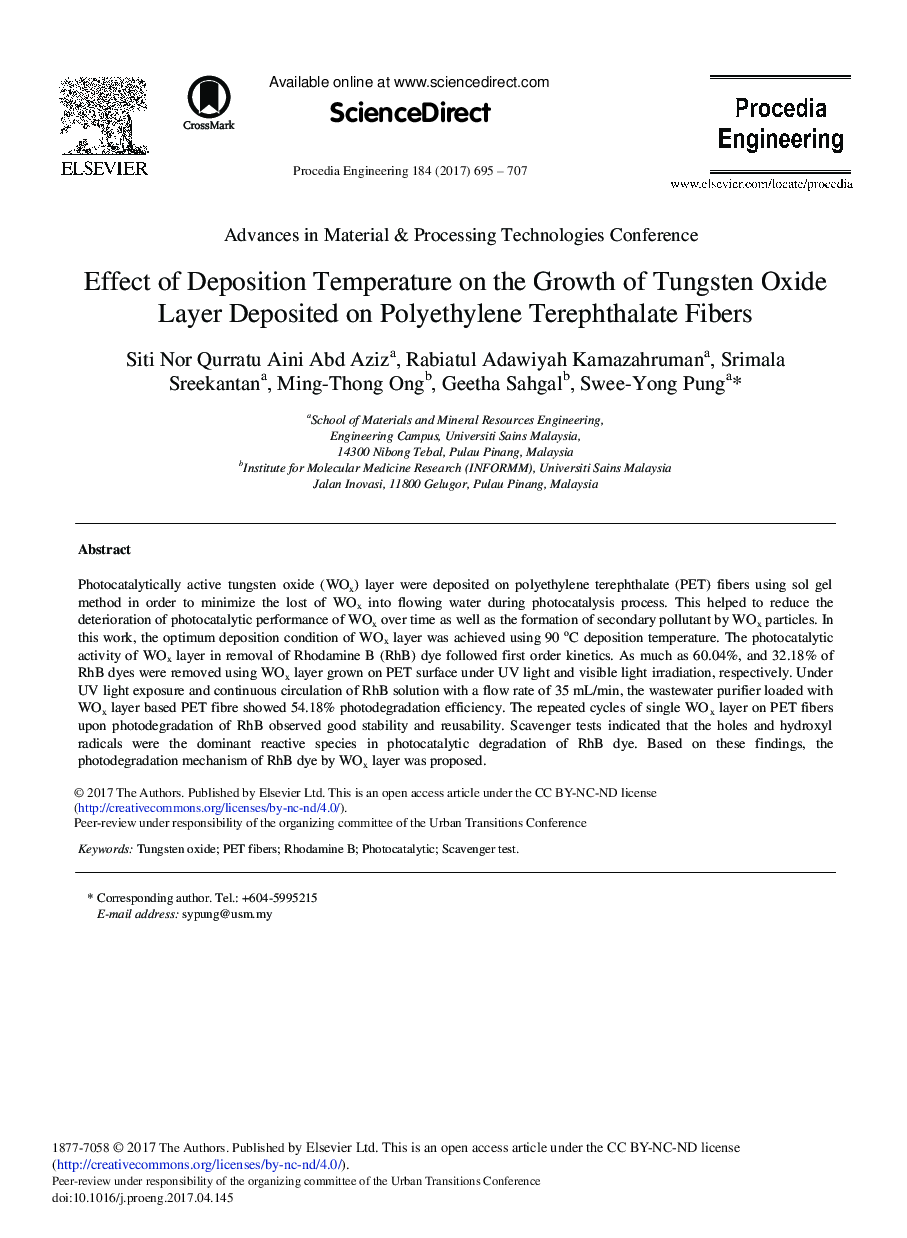| Article ID | Journal | Published Year | Pages | File Type |
|---|---|---|---|---|
| 5029184 | Procedia Engineering | 2017 | 13 Pages |
Abstract
Photocatalytically active tungsten oxide (WOx) layer were deposited on polyethylene terephthalate (PET) fibers using sol gel method in order to minimize the lost of WOx into flowing water during photocatalysis process. This helped to reduce the deterioration of photocatalytic performance of WOx over time as well as the formation of secondary pollutant by WOx particles. In this work, the optimum deposition condition of WOx layer was achieved using 90 ÌC deposition temperature. The photocatalytic activity of WOx layer in removal of Rhodamine B (RhB) dye followed first order kinetics. As much as 60.04%, and 32.18% of RhB dyes were removed using WOx layer grown on PET surface under UV light and visible light irradiation, respectively. Under UV light exposure and continuous circulation of RhB solution with a flow rate of 35Â mL/min, the wastewater purifier loaded with WOx layer based PET fibre showed 54.18% photodegradation efficiency. The repeated cycles of single WOx layer on PET fibers upon photodegradation of RhB observed good stability and reusability. Scavenger tests indicated that the holes and hydroxyl radicals were the dominant reactive species in photocatalytic degradation of RhB dye. Based on these findings, the photodegradation mechanism of RhB dye by WOx layer was proposed.
Related Topics
Physical Sciences and Engineering
Engineering
Engineering (General)
Authors
Siti Nor Qurratu Aini Abd Aziz, Rabiatul Adawiyah Kamazahruman, Srimala Sreekantan, Ming-Thong Ong, Geetha Sahgal, Swee-Yong Pung,
